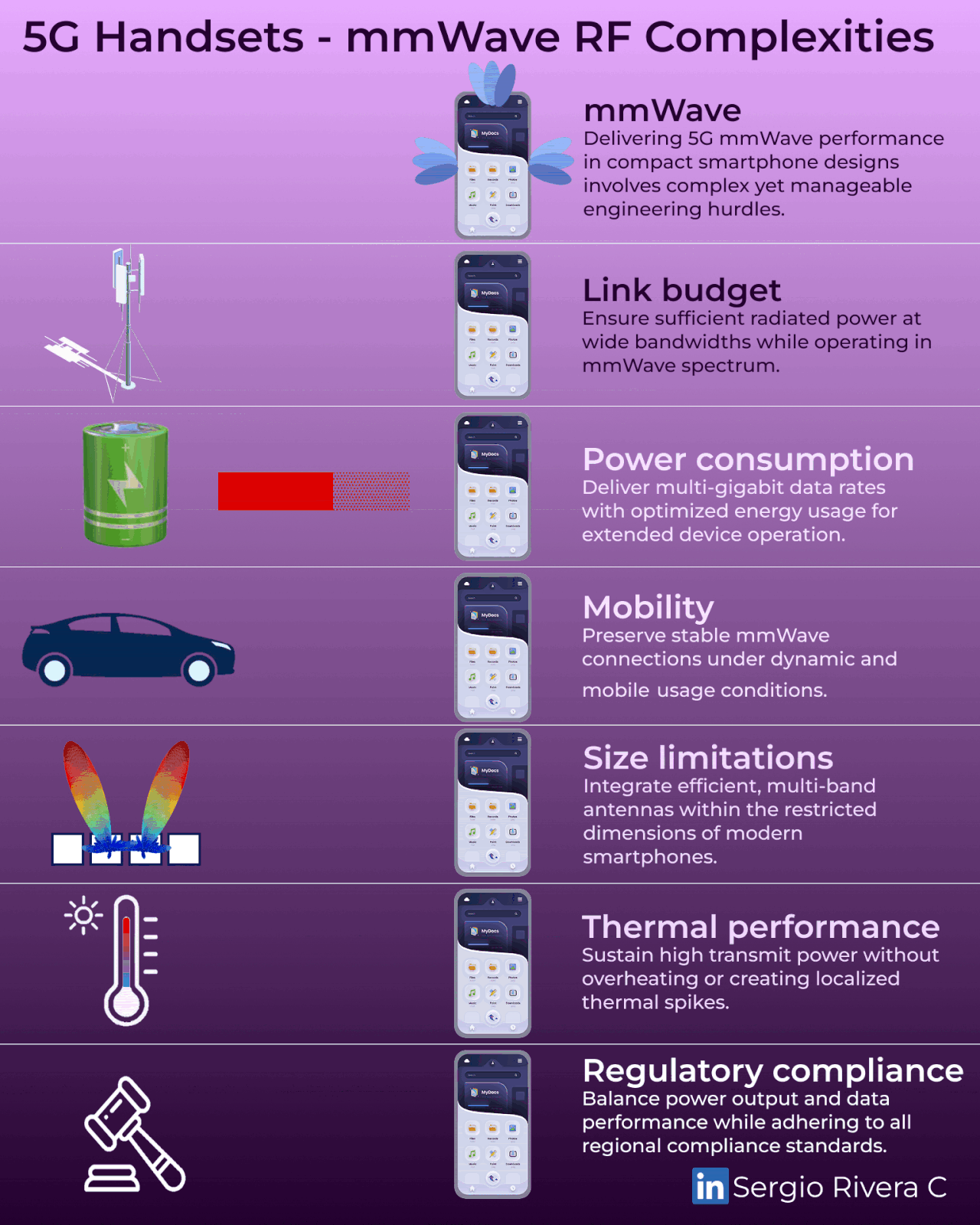5G mmWave Smartphones: Overcoming RF Challenges
Deploying 5G millimeter wave (mmWave) in smartphones brings unique technical hurdles that go beyond network infrastructure. Original Equipment Manufacturer (OEMs), chipset makers, and designers must solve complex RF challenges while fitting everything into a sleek, pocket-sized device.
![]() 𝗟𝗶𝗻𝗸 𝗕𝘂𝗱𝗴𝗲𝘁
𝗟𝗶𝗻𝗸 𝗕𝘂𝗱𝗴𝗲𝘁
Achieving target radiated power with high bandwidths at mmWave frequencies is more demanding than at lower bands, requiring careful RF optimization.
![]() 𝗣𝗼𝘄𝗲𝗿 𝗖𝗼𝗻𝘀𝘂𝗺𝗽𝘁𝗶𝗼𝗻 & 𝗧𝗵𝗲𝗿𝗺𝗮𝗹 𝗣𝗲𝗿𝗳𝗼𝗿𝗺𝗮𝗻𝗰𝗲
𝗣𝗼𝘄𝗲𝗿 𝗖𝗼𝗻𝘀𝘂𝗺𝗽𝘁𝗶𝗼𝗻 & 𝗧𝗵𝗲𝗿𝗺𝗮𝗹 𝗣𝗲𝗿𝗳𝗼𝗿𝗺𝗮𝗻𝗰𝗲
Without optimization, mmWave devices would consume significantly more power to compensate for higher path loss, leading to reduced battery life and excessive heat. Advanced algorithms now balance power output, maintain thermal stability, and meet regulatory compliance standards such as FCC limits.
![]() 𝗠𝗼𝗯𝗶𝗹𝗶𝘁𝘆
𝗠𝗼𝗯𝗶𝗹𝗶𝘁𝘆
Unlike LTE’s broad coverage beams, mmWave uses narrow beams, making beam management and intra-cell mobility critical for seamless connectivity in dynamic environments.
![]() 𝗦𝘁𝗿𝗶𝗻𝗴𝗲𝗻𝘁 𝗦𝗶𝘇𝗲 𝗖𝗼𝗻𝘀𝘁𝗿𝗮𝗶𝗻𝘁𝘀
𝗦𝘁𝗿𝗶𝗻𝗴𝗲𝗻𝘁 𝗦𝗶𝘇𝗲 𝗖𝗼𝗻𝘀𝘁𝗿𝗮𝗶𝗻𝘁𝘀
High antenna efficiency, multi-band support, and compact integration demand innovative hardware design, shrinking traditionally large mmWave components into smartphone form factors without sacrificing performance.
Implementing 5G mmWave is a story of engineering ingenuity, where every millimeter of space and milliwatt of power matters.

![]() Related content
Related content
Post: Inside a 5G mmWave UE: How Transmit Power Works — Bite-sized